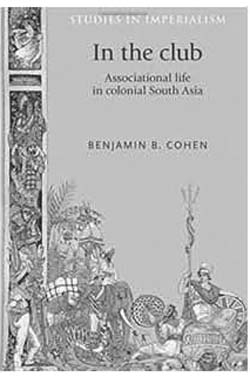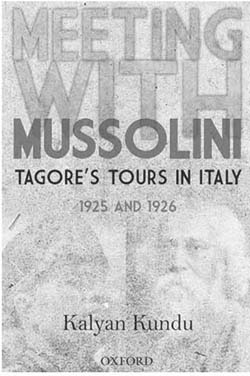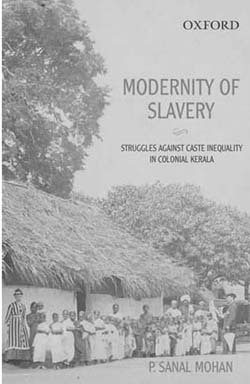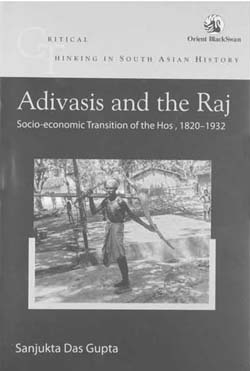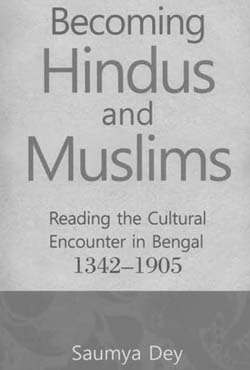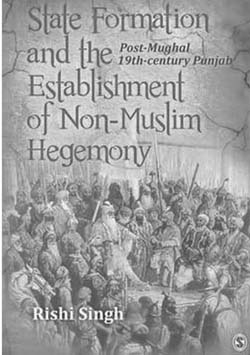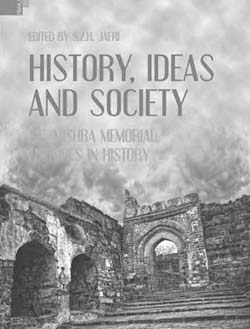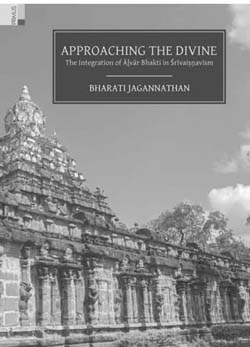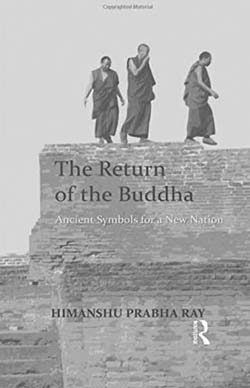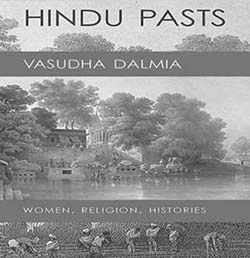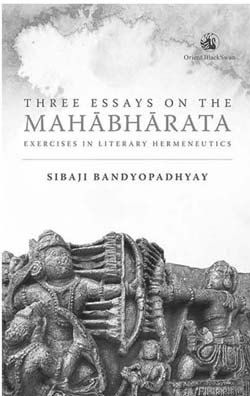Because the darkness is never so distant,’ ————-W. H. AudenBrian D. Freese writes in the preface that ‘all literary depictions of the Holocaust end as failures’. ‘Holocaust is but an approximation of what happened. The species cannot grasp its nature for the word is not the thing itself’. The species, he asserts elsewhere, is ‘damaged, for only a damaged species could have committed the Holocaust.’ The author starts with a pessimism born of long years devoted to understanding the phenomenon.
Archives
February 2016 . VOLUME 40, NUMBER 2Since the emergence to power of the Sangh Parivar and the dominance in Indian politics of a narrow-minded majoritarianism, there has been an understandable tendency towards nostalgia for the so-called ‘Nehruvian’ period. This is a tendency in which this reviewer has also participated: in publication projects that have more or less been based on backward glances to what seems in retrospect a ‘golden age’ of the Indian state. But the nostalgia for a more tolerant and less exclusionary (in terms of income, class, caste, gender) India can go too far in invoking the ‘Nehruvian’ as such a golden age
In the Club is a welcome addition to the study of colonialism and colonial bourgeois sociality in South Asia. The book is not so much a history of clubs as it is a study of the formation and articulation of social relations in clubs. Though the network of clubs played a significant role in the unfolding of colonialism in South Asia, it is still a relatively ignored area in the historiography of colonial encounters. In fact, this is the first book-length survey of clubs in this part of the world. It is not dedicated to a particular city.
Rabindranath Tagore’s visit to Italy in 1925, and especially the controversial tour of Italy in 1926 at the invitation of Benito Mussolini, has been a matter of interest to Tagore scholars for a long time. The acceptance of an invitation from a Fascist dictator by a great humanist baffled the international community of that time. The encounter also aroused a good deal of media interest both within and outside Italy.
As the title suggests, P. Sanal Mohan’s Modernity of Slavery, employs a multidisciplinary approach and marks a significant contribution towards understanding the history of oppression within the story of modernity. By exploring the hitherto neglected histories of slave caste populations in colonial Kerala, he makes a passionate attempt to recover lost voices.
This book as the author claims ‘draws upon her PhD dissertation written more than a quarter of a century ago’. She fears that the definition of ‘cultural history at that time was rather narrow and the broad spectrum that is attached today to this branch of historical study was unknown those days’. She apologizes for the narrative style of her compendium which she admits is ‘overburdened with data’ and is apprehensive about the ‘readability of the book’ because she admits that her ‘youthful enthusiasm as a researcher’ led to a kind of ‘data fetishism’.
In 1981, the Kolhan Raksha Sangh, an adivasi political organization formed in Singhbhum in 1977, declared that Kolhan1 was a sovereign state, independent from India. A delegation of the representatives of this ‘Kolhan republic’ went to Delhi, and thereafter to England. The delegates claimed that Kolhan was legally outside India’s territory and was entitled to self-government under Wilkinson’s Rules since there was no official document of merger between Kolhan and the State of India.
Saumya Dey’s Becoming Hindus and Muslims tries to provide an alternative understanding of the growth of HinduMuslim identities in the region of Bengal. He challenges the understanding of historians that attributed primacy to the coming of colonialism in forming Indian identities like the ever so contested Hindu-Muslim identity. The book then wants to shatter the myth that prior to the arrival of colonialism Indians were not conscious of group labels like ‘Hindus’ and ‘Muslims’.
There is growing concern among a section of scholars that the ebbing away of the spirit of Punjabiyat results in erosion of interest in Punjab Studies. They strive to identify some of those over-arching Punjabi ties that communicate the message of Punjabiyat stretched across the five doabs and facilitate forging ties across the religious boundaries. These scholarly initiatives struggle to outline Punjab’s cultural diversity and portray experiences of plurality that flow along the Radcliffe boundary of the Indo-Pakistan subcontinent and keep its residents aware of how Punjabiyat is still breathing in the lives of millions of Punjabis.
Deba Prosad Chowdhury’s The Idea of History in a Changing World disaggregates the different historical moments that produced the conceptual frame of modern scientific history. Tracing its philosophical foundations in Herodotus and Thucydides, Chowdhury locates its founding concepts in post-enlightenment philosophical discourses of humanism, rationalism, progress, objectivity and scientific thought.
Acompilation of ten essays originally presented on the occasion of the S.C. Mishra memorial at the Indian History Congress, History, Ideas and Society covers a wide variety of themes, ranging from historical ideas and ideologies to colonialism, communalism, sex-education, science and coins, the book portrays the dynamics of Indian history at its best. By bringing together writings on various periods of time and place, it not only adds to the richness but also contributes to unravelling the pathbreaking moments of Indian historical research.
In the ‘Introduction’ to The Invention of Tradition [1983], co-edited by Eric Hobsbwam and Terence Ranger. Hobsbawm remarked, ‘“Traditions” which appear or claim to be old are often recent in origin and sometimes invented…. “Invented tradition” is taken to mean a set of practices….which seek to inculcate certain values and norms of behaviour by repetition, which automatically implies continuity with the past.’ Approaching the Divine by Bharati Jagannathan illustrates the case of such an invented tradition of the Srivaisnava community of South India (located in modern Tamil Nadu, southern Andhra Pradesh and Karnataka).
It is well known that the first Indian initiative at writing a history of Indian Archaeology was taken by Sourindranath Roy when he wrote ‘Indian Archaeology from Jones to Marshall (1784–1947)’ way back in 1953 which was largely a narrative of events relating to official archaeologists. On its publication and thereafter Roy’s narrative acquired a seminal status. However, beyond the official scheme of things there were initiatives of many individuals and institutions that played a significant role in understanding the past.
Amaravati began to be developed as the capital of Andhra Pradesh last year, and the State’s creation of its new identity has involved an emphasis on its Buddhist past, at least partly to attract foreign investment. The Government of Andhra Pradesh also plans to set up a museum in Amaravati in memory of B.R. Ambedkar, who converted to Buddhism, but also interpreted its Pali canon afresh.
Editorial
In ‘Where these essays are coming from’, the introduction to this volume, Vasudha Dalmia retraces her intellectual formation and weaves the trajectory of her personal research interests with the political and cultural history of the last three decades. Intellectual autobiographies are all too rare, yet always riveting to read.Chance encounters that lead to unforeseen life paths (for her, landing in Germany as a 22-year-old), mixed family histories that surface later in life as questions demanding to be answered and reconciled
The Mahåbhårata is a unique text which not only claims for itself an encyclopaedic status declaring itself to be a compendium of everything that is there on social morality (dharma), political economy (artha), pleasure (kåma) and spiritual liberation (moksa) (Mbh I.56.33)—but also points out its rightful position as an itihåsa placed at a conversational crossroads among the authors located in its past, present and future (Mbh I.1.24; I.56.22). Therefore, there is no wonder that it captured the imagination of scholars, interpreters, translators and creative writers across time and space, leading to the production of a mammoth bibliography around itself.
Guest editing a special history issue for The Book Review was a good opportunity to reflect on what history means and what it represents, standing in the second decade of the twenty-first century. The discipline has moved beyond the Positivist idea of ‘scientific history’; yet, in popular perception (substantiated by the recent comments of a well-read novelist), History remains primarily a chronology of events. The academia—particularly in humanities—has become largely interdisciplinary, and that definitely reshaped our way of reconstructing the past.


